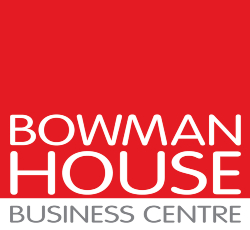In case you missed it see what’s in this section
Let's Talk

New Tax Rules: What Do They Mean for Landlords?
More than 400,000 landlords could move into a higher tax bracket as a result of Government changes to the tax rules.
The claim, made by the National Landlord’s Association, highlights a potential knock-on effect to these changes for buy-to-let landlords who are basic rate payers. Why is this the case? How do you know if it will happen to you? The key is to understand the changes and how they relate to your personal financial situation.
All landlords, prospective or existing, need to get up to speed with the latest developments to avoid any financial surprises down the line.
What are the tax changes that landlords need to know about?
So, what do you need to know? Well, the key change comes to the way in which tax relief can be claimed by buy-to-let landlords.
Landlords were able to offset the mortgage interest on their buy-to-let property when calculating the amount of tax to pay on the profits earned on their bricks and mortar. The new rules reduce this relief.
The buy-to-let jargon buster from Simple Landlords offers an example to help explain this.
In a case in which £10,000 is earned from rental income, £5,000 mortgage interest is paid and there are fees and costs of £1,000, it explains that:
*previously this would have meant a profit of £4,000 – the total income with both other figures ‘offset’. Tax would then be paid on this figure depending on your income tax band.
*new measures will mean that all bar the costs and fees is calculated at profit, so in this case £9,000. Tax will be paid on this – again in line with an income tax band – but everyone will also be able to claim 20% of their mortgage interest back.
The guide explains that, actually, the tax paid by a basic rate payer (someone who pays 20% tax) is exactly the same in both instances - £800. Higher rate payers (those who pay 40%), pay £1,600 in the first instance and £2,600 in the second.
What else do you need to know this tax relief?
The changes, then, are all about defining what is classed as ‘profit’ and, therefore, open to be taxed.
It’s important to stress that they are being brought in over time, with the calculation showing the situation as it will be by 2020. If you want to see the detail for each of the year’s between now and then, check out the Government’s page explaining this.
It’s also important to note that the subtle change when it comes to ‘defining profit’ may also be significant. The example above shows you to be making £5,000 more profit and this might well mean that your earnings push from one income tax bracket to another – the root of the calculation in the National Landlord’s Association report we mentioned at the start. As a result, landlords need to be aware of their total earnings and what difference, if any, counting this extra profit will make.
It’s fair to say this hasn’t gone down too well with landlords either – with one survey finding that reversing these changes is the number one thing they would like to see the Government do in 2017.
On the flip side, as we’ve seen, the changes might mean no financial change if counting this added ‘income’ doesn’t affect your income tax band.
What else should landlords know?
As of last year, landlords do now pay more Stamp Duty when purchasing a property for buy-to-let. This is set at three per cent higher than the equivalent amount for a buyer who intends to live in the house themselves.
Landlords should also be aware that capital gains tax – paid out when you sell your property – is higher for bricks and mortar than other assets. The current rate is 28% for higher rate payers and 18% for those in the basic rate income tax band.
Finally, some people have chosen to ‘sell’ their homes to a company that they themselves have set up to avoid the impact of these changes. Setting up a company brings its own set of tax rules, of course, but it’s worth noting that corporation tax – the tax paid on profits you make – is 20% and due to drop to 18% by 2020.
There are plenty of opportunities for investors in property. Provided you have your eyes open and keep up to speed with the latest developments you should still be able to make money from an asset that remains in high demand.
Weather in Swindon
Listings



















